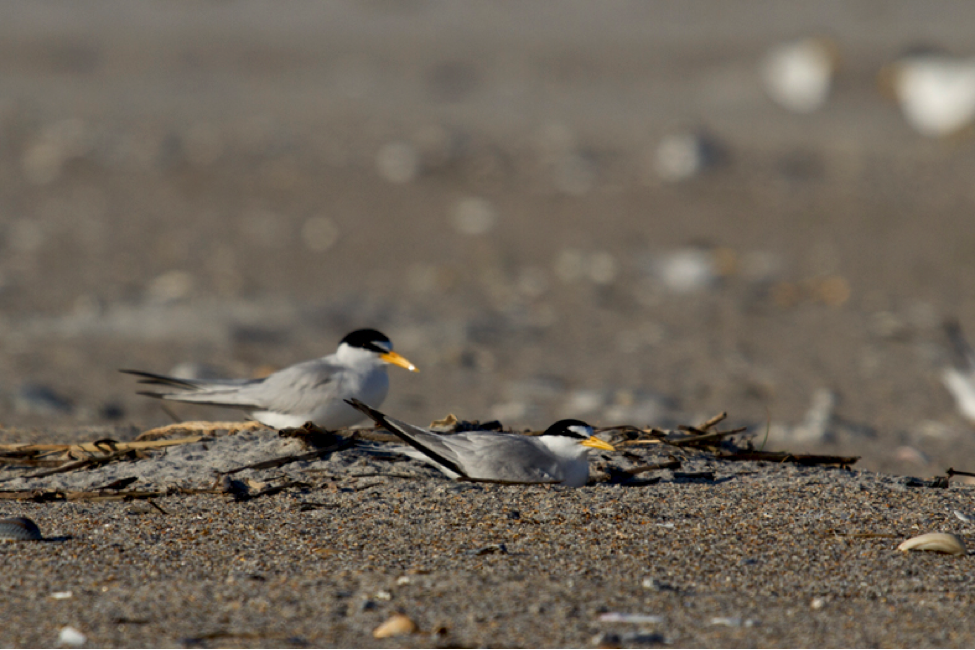For more than 25 years, Audubon North Carolina has managed a network of coastal sites along our state’s coast offering a haven for beach-nesting birds. By protecting the specialized habitats that birds need, shorebirds have a chance to thrive. Read on to learn more about nesting updates from important birding area Lea-Hutaff Island, and the coastal team who protects them.
Please welcome guest writer Sharna Tolfree.
Now that it’s late summer, nesting on Lea-Hutaff is tapering off. The majority of the Least Tern nests have hatched, and the chicks are growing up—learning the skills they need to from their parents. Many fledglings are stretching their wings, taking practice flights around the colony, and practicing fishing in the shallows.

A few late bloomers:
But not everyone’s ready to fly! Four American Oystercatcher pairs are still nesting. One nest hatched two chicks July 1, and the remaining nests are due to hatch before the end of the month. We’ll be monitoring them closely, and they will receive the best possible protection, as all birds do on Lea-Hutaff Island.
The remaining oystercatcher pairs on the island have finished nesting and spend their time performing territorial displays with neighboring pairs.
Black Skimmers and Common Terns have faced some predation this summer, which has been a limiting factor in the success of many nesting birds on the island. In addition to raccoons and foxes, the arrival of coyotes threaten the survival of eggs and chicks.
Don’t forget the sea turtles:
Birds are not the only wildlife nesting on the island, though. Nesting sea turtles depend on healthy beaches just like birds and Lea-Hutaff Island is no exception!
Sea turtle activity on the island is picking up too. We now have three confirmed loggerhead sea turtle nests. Audubon’s policy is to leave all sea turtle nests in place and protect them from marauding predators that want to eat their eggs But on the rare occasion that a nest is clearly in imminent danger of being flooded by tides or otherwise lost, it is relocated to a more suitable area following the guidelines established by the North Carolina Wildlife Resources Commission.
The first nest of the season, which contained 120 eggs, needed to be relocated in order to avoid overwash from high tides and it was also at risk of being buried by collapsing dunes.
Sea turtle nesting will continue through July-September. We expect to see turtles hatching in early September.
Learn more about Audubon North Carolina’s conservation efforts to protect the seas and shores our birds need to thrive.



